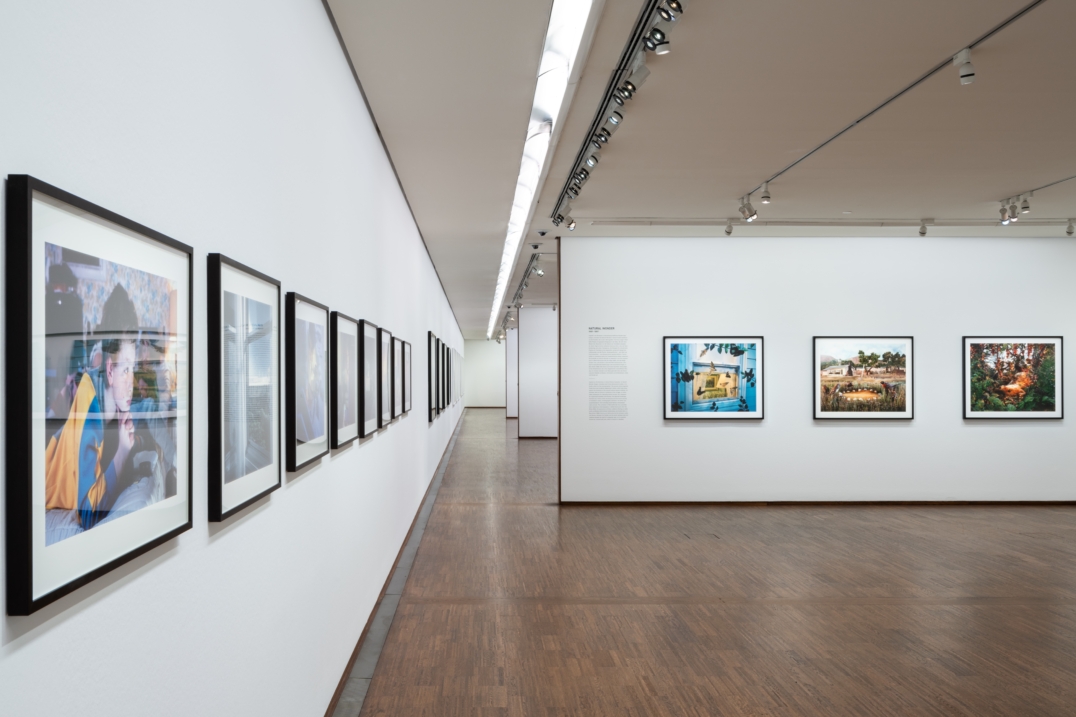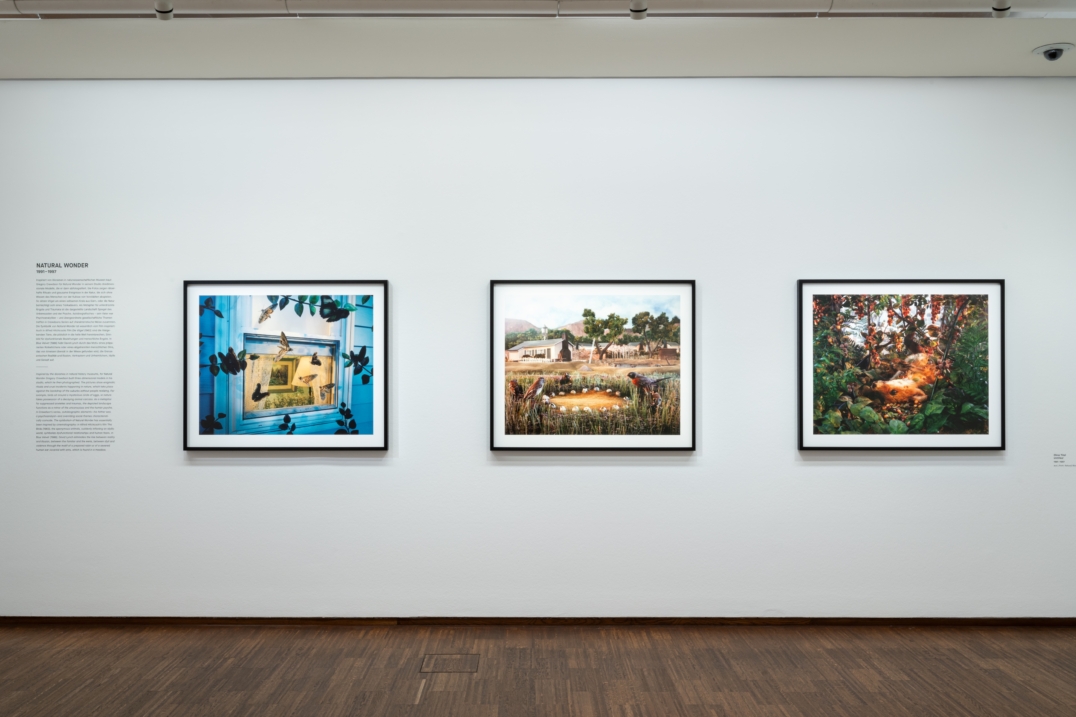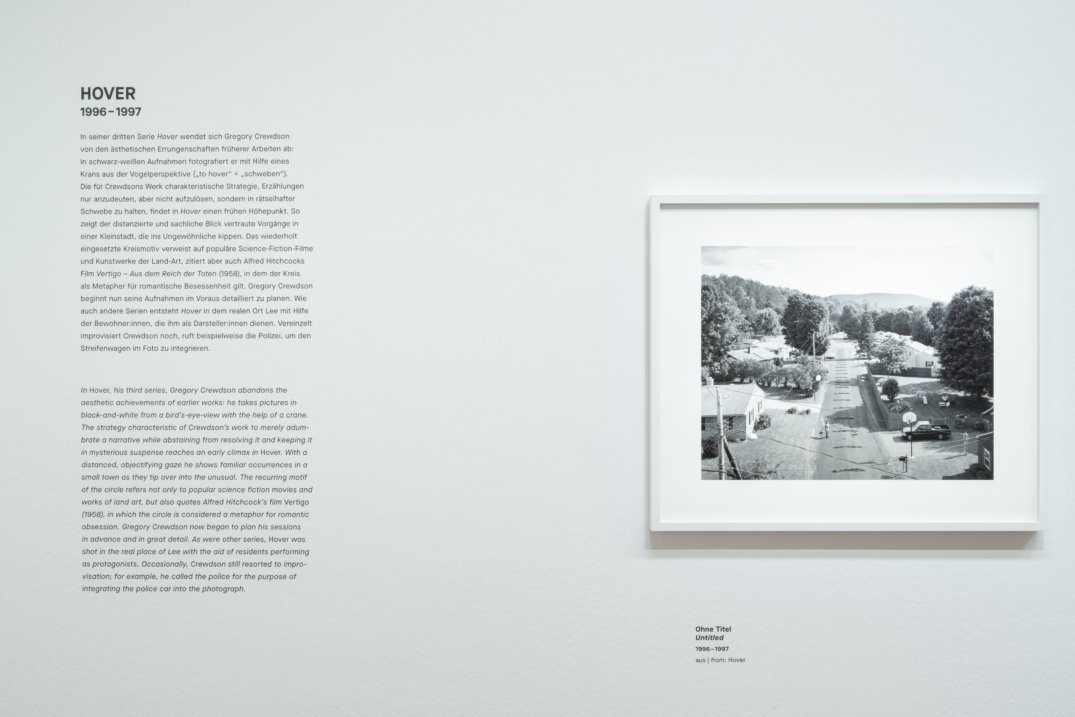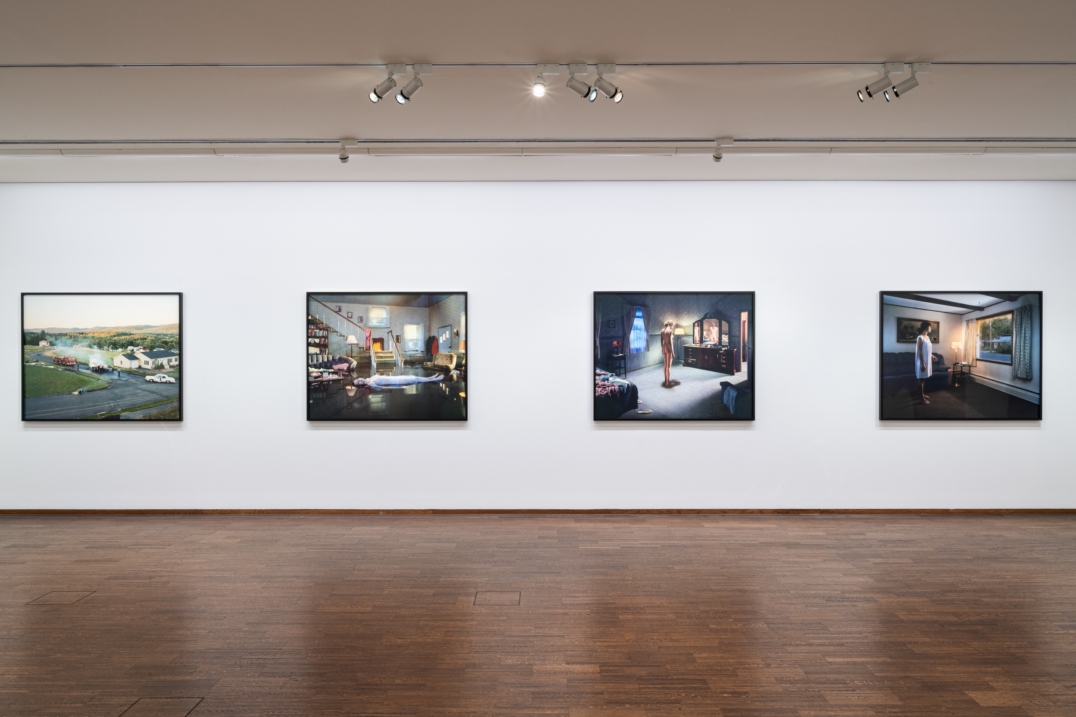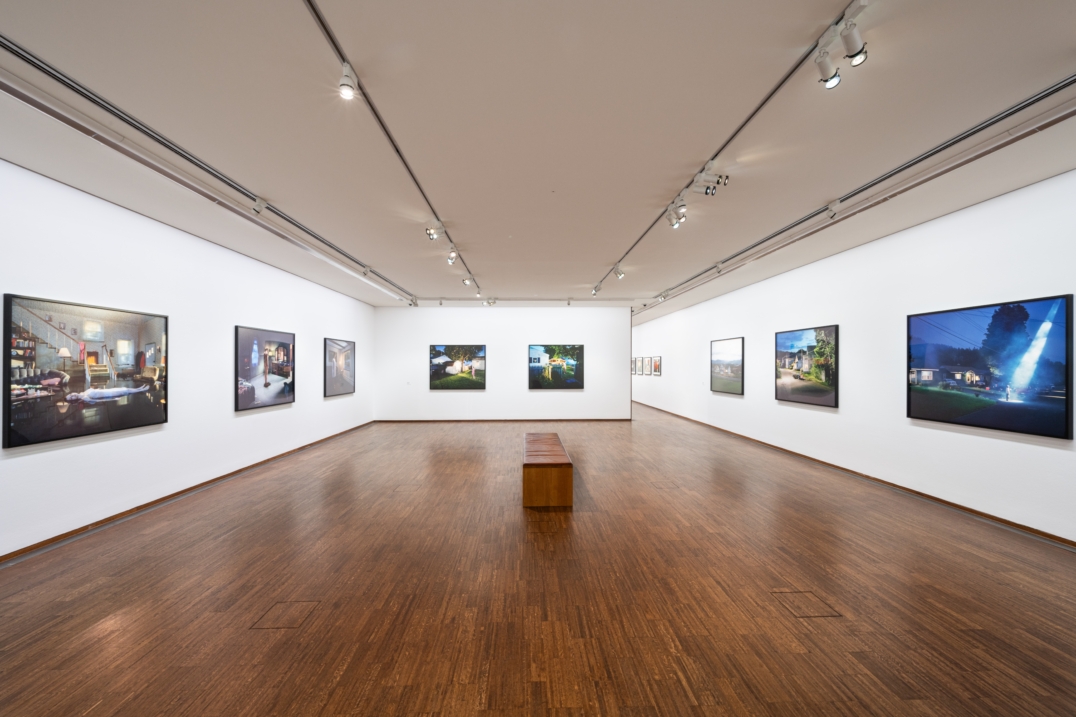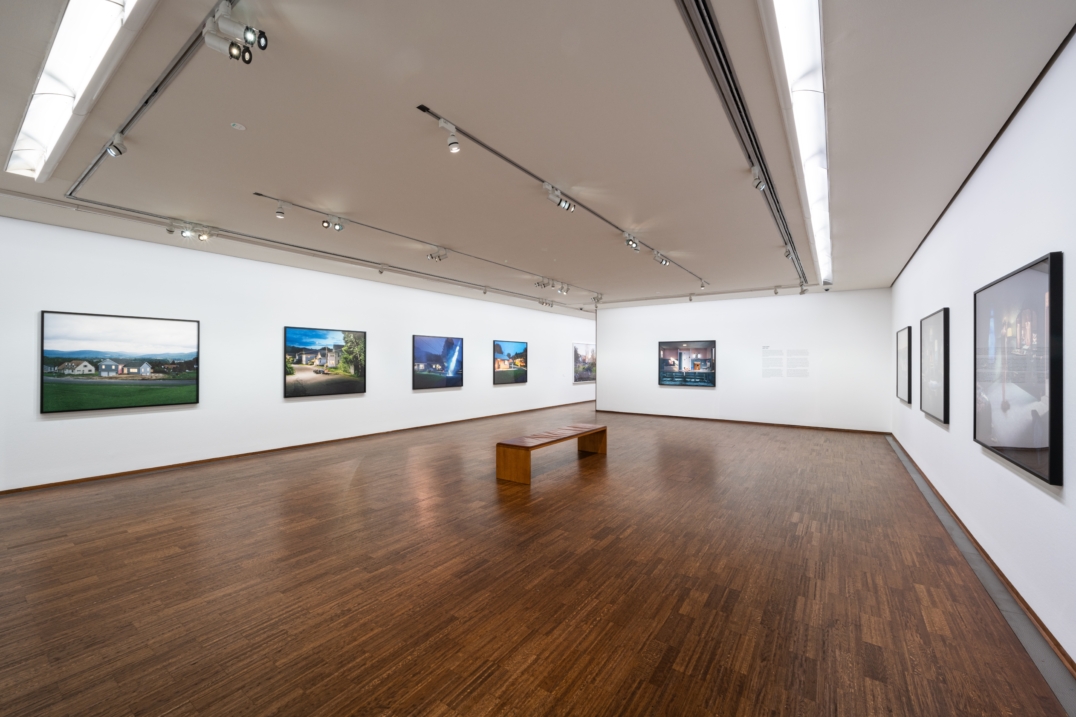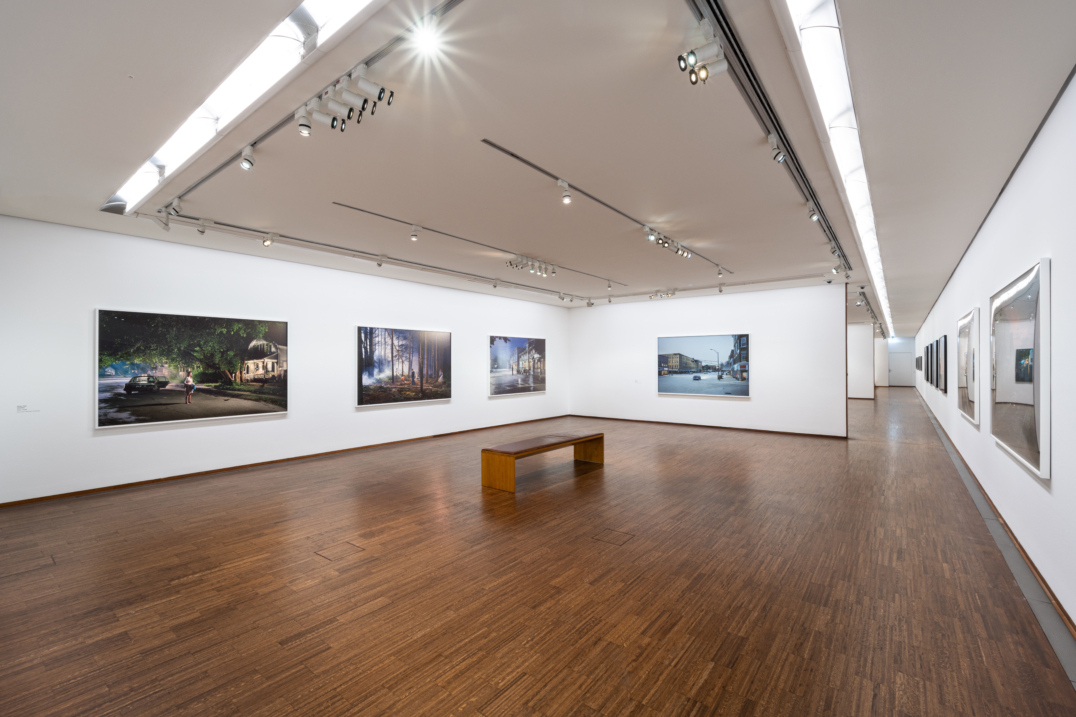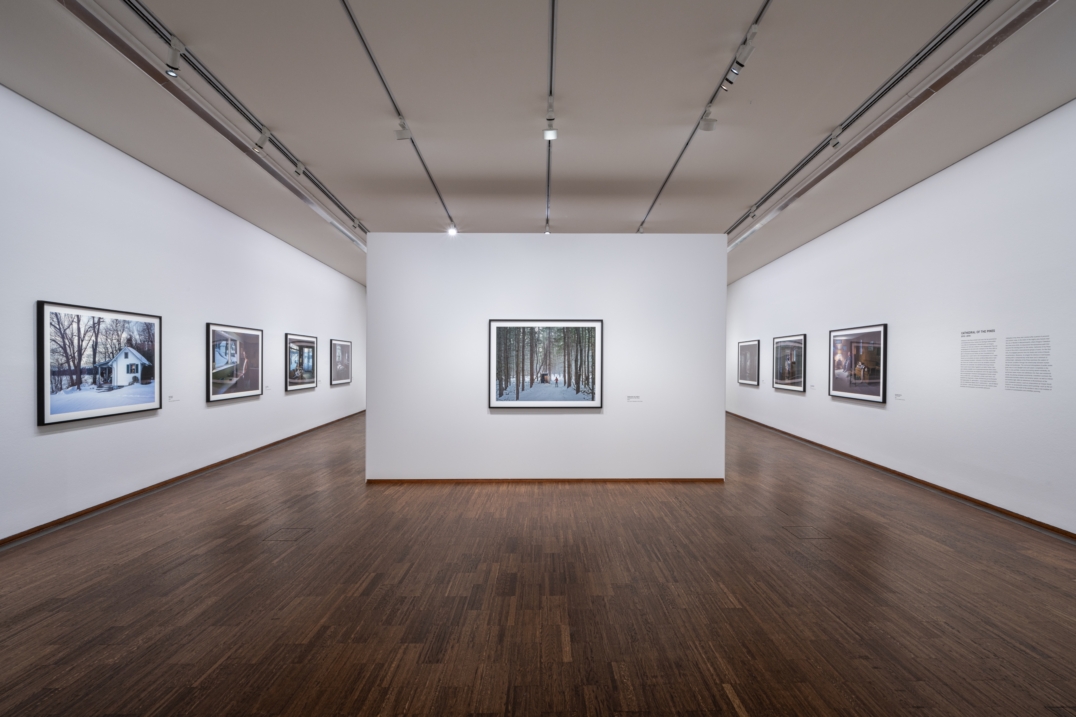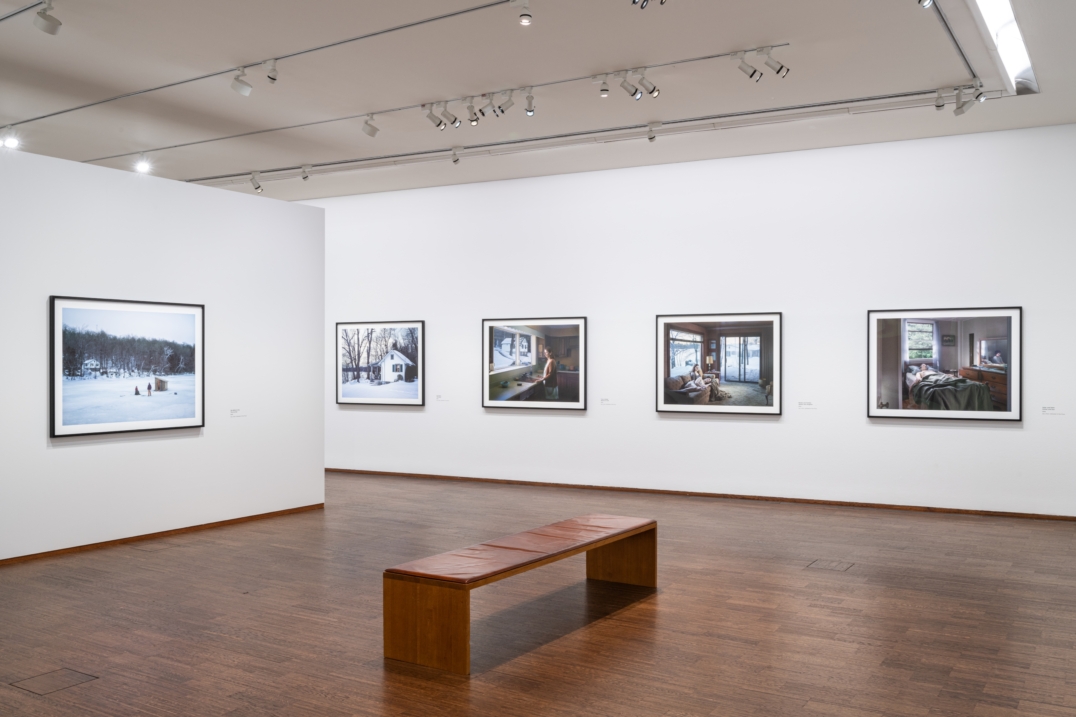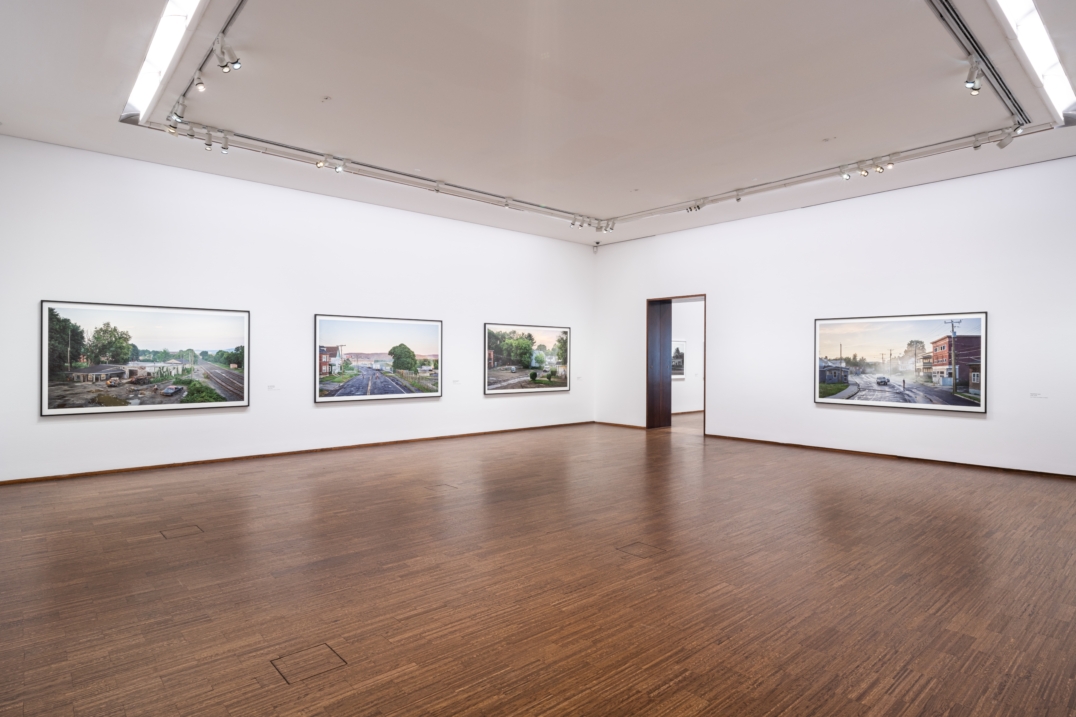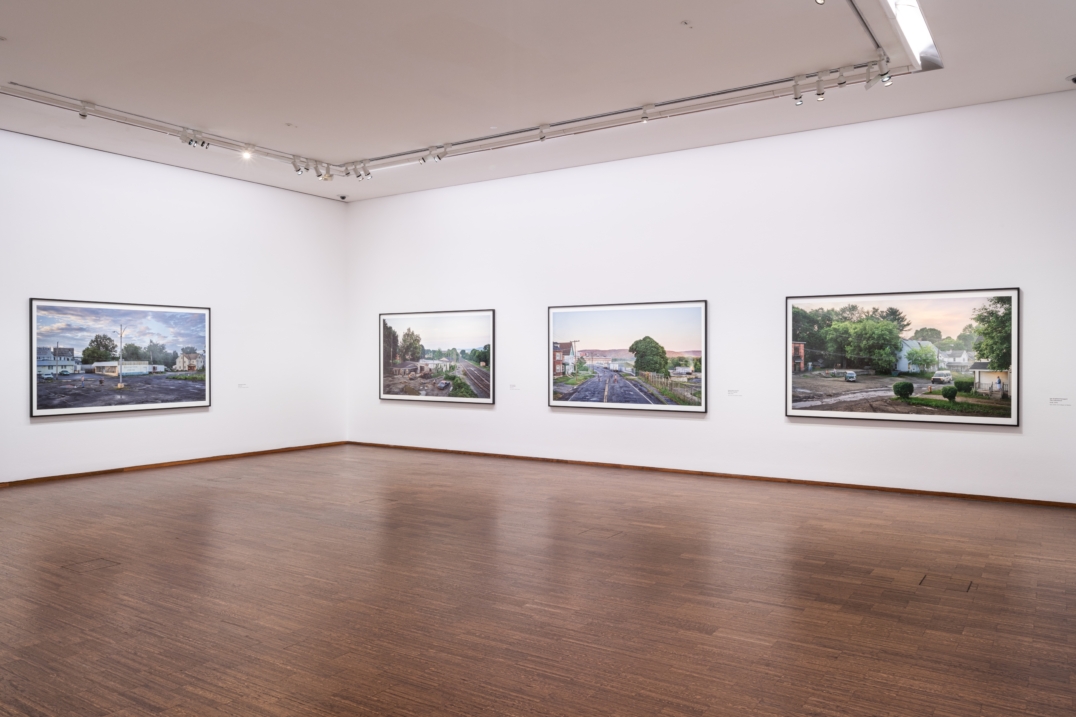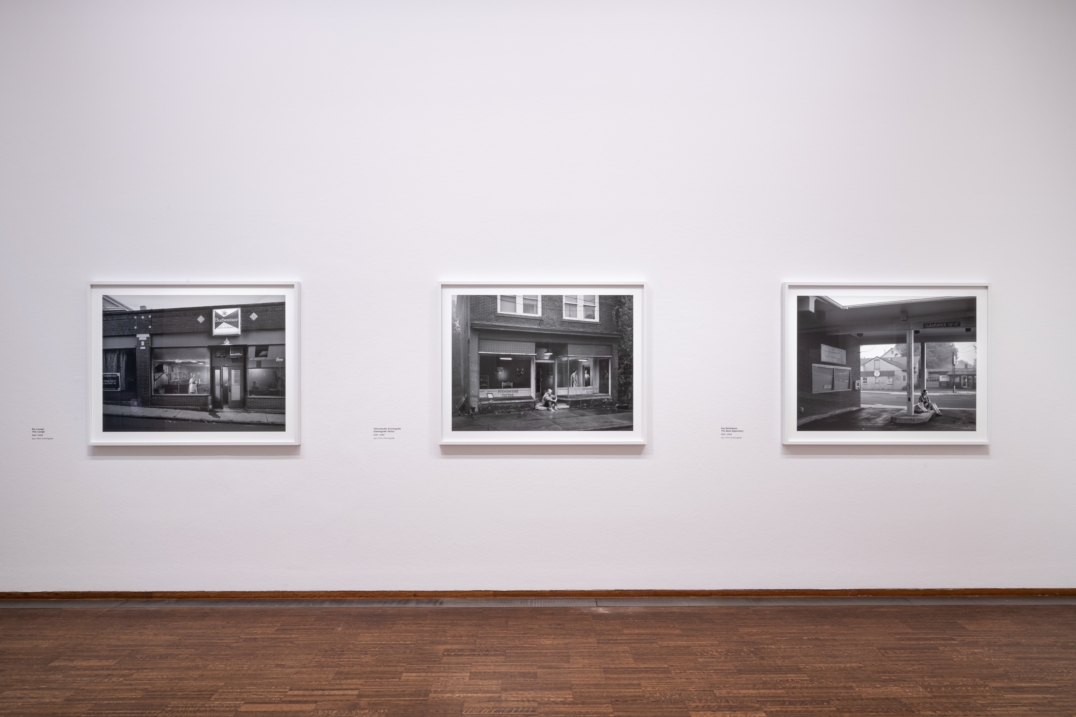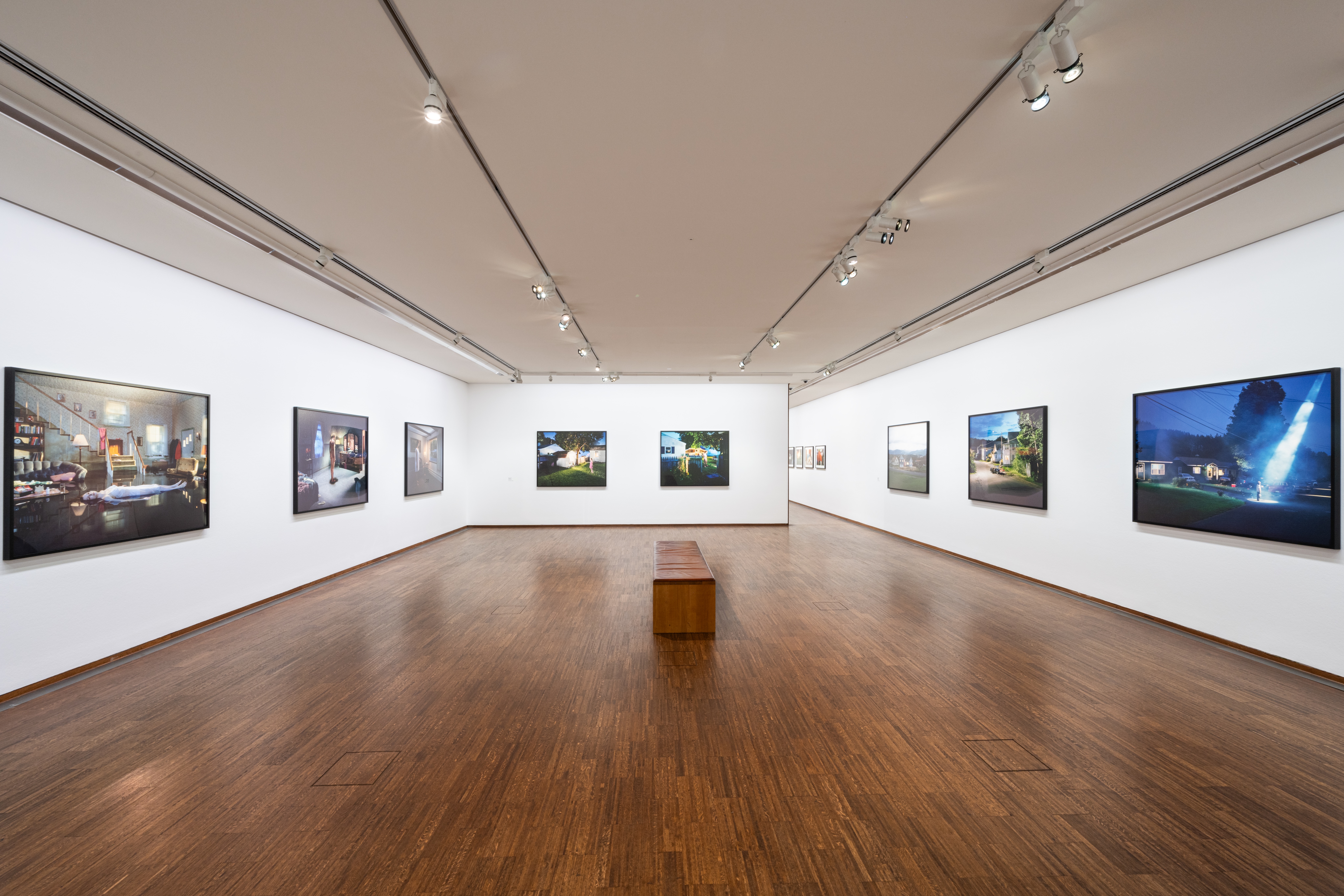
Gregory Crewdson
Retrospective – Vienna
Gregory Crewdson’s retrospective at the ALBERTINA museum, opening its doors on May 29, comprises a total of nine groups of works, created over the last three and a half decades and conceived serially.
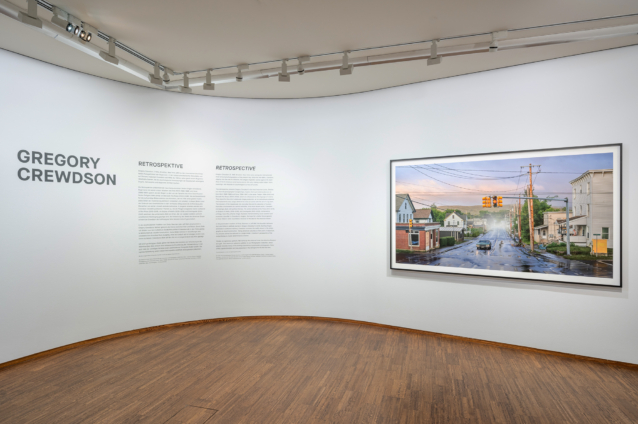
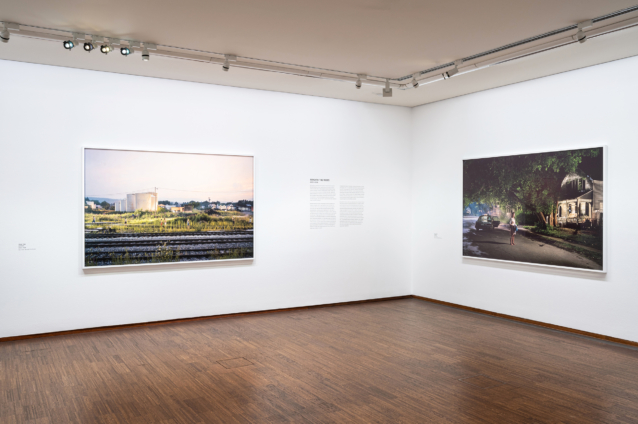
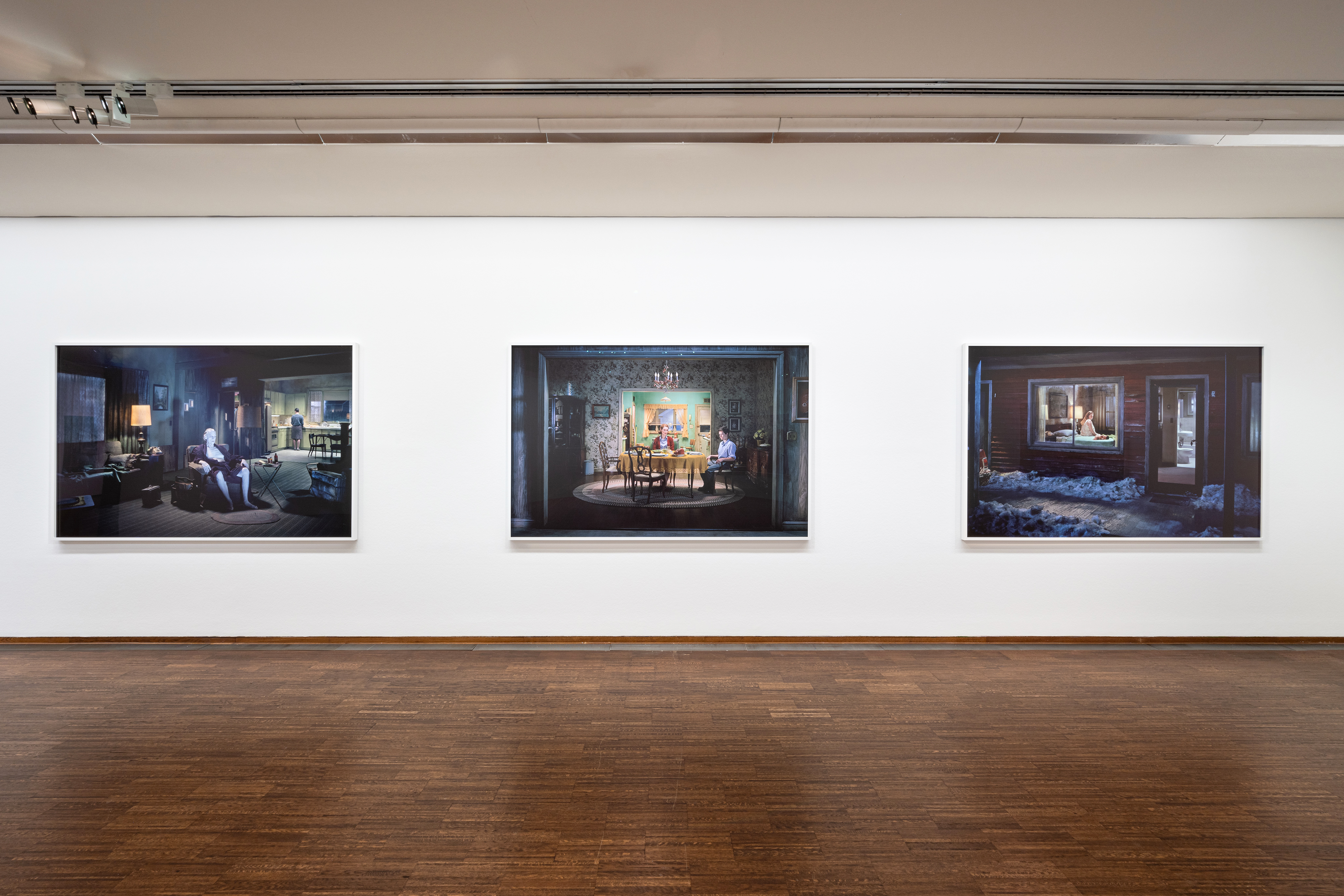
The retrospective at the ALBERTINA comprises a total of nine groups of works, created over the last three and a half decades and conceived serially. Starting with his Early Work (1986–1988), the exhibition includes Crewdson’s best-known series such as Twilight (1998–2002), which depicts scenes shaped by cinematic language, with people being confronted by unexplainable phenomena in their everyday lives. The impressive, mysterious large-scale scenes from the Beneath the Roses series (2003‒2008) deal with people’s isolation and alienation from their environment. The most recently completed group of works Eveningside (2021–2022) portrays an unheroic image of a fictional small town of the same name in atmospheric black and white. Following Cathedral of the Pines (2013–2014) and An Eclipse of Moths (2018–2019), Eveningside represents the final part of a trilogy through which the artist examines the social decline of society far removed from the American dream.
Crewdson’s large-scale pictures are preceded by months of planning; they are created with the participation of hundreds of people from casting, wardrobe and art departments, plus technical specialists. Production photographs taken in parallel illustrate the highly elaborate process of design, culminating in an extensive post-production process in which the final photographs are assembled from multiple shots.
As a generous gesture, the exhibition is accompanied by a significant donation to the ALBERTINA’s photo collection. This extensive assimilation of works strengthens the focus of the collection on contemporary photography.
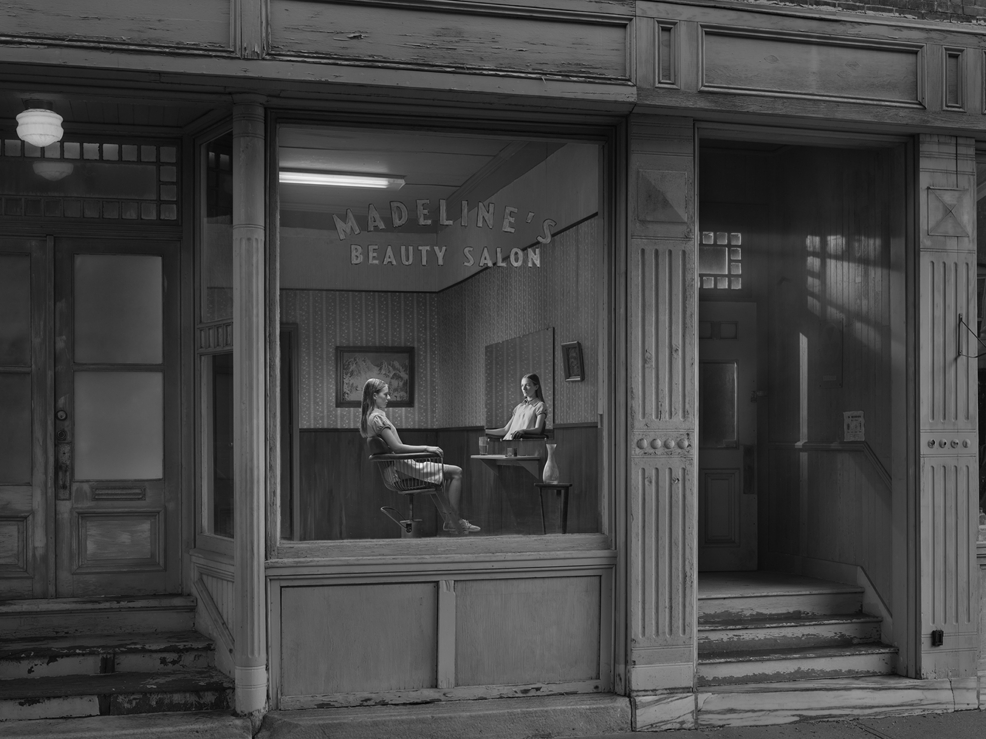
Madeline’s Beauty Salon
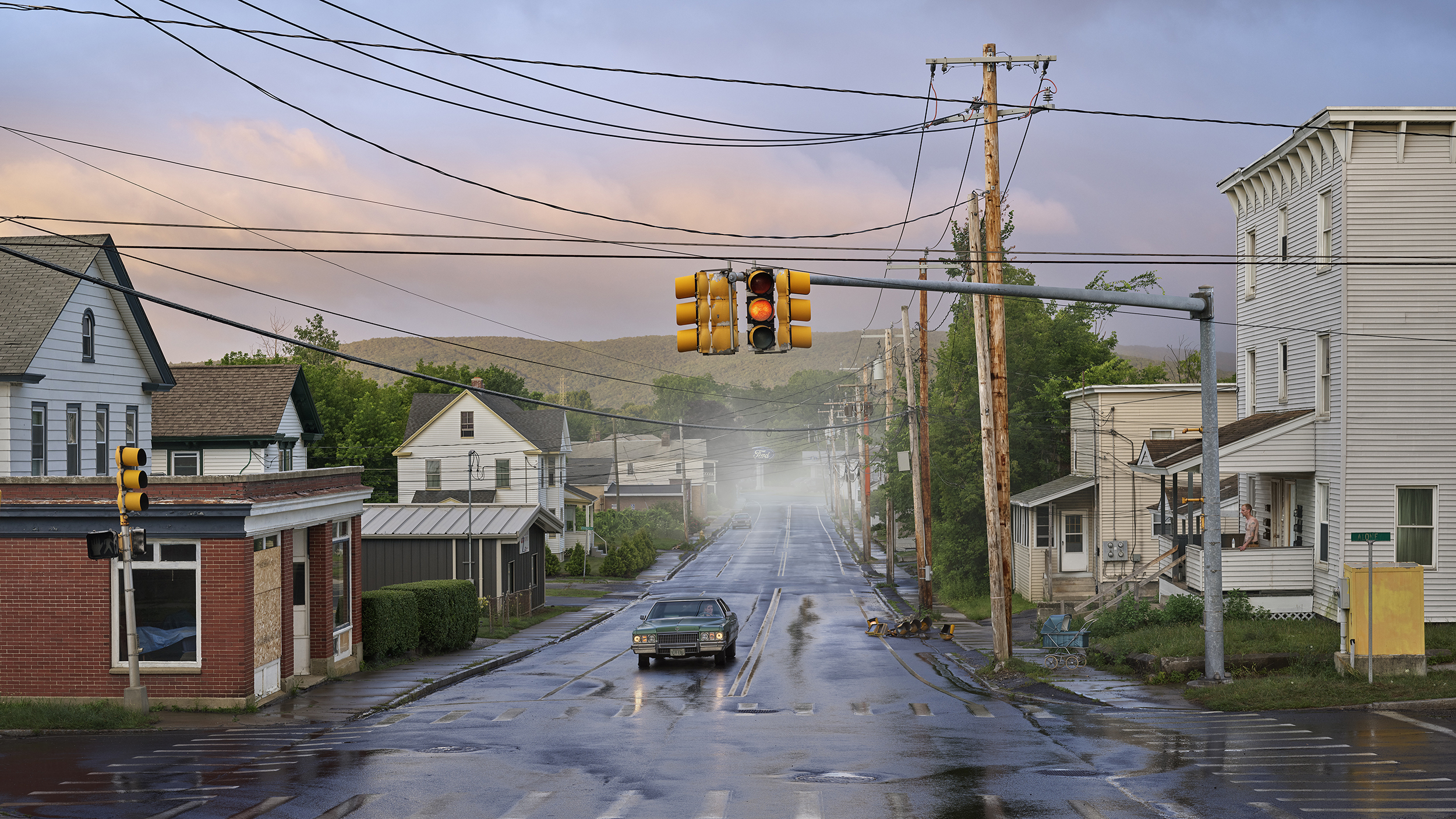
The artist

Born in 1962 in Brooklyn, Gregory Crewdson lives and works in New York. A leading figure in American photography, he stages his photographs like films, using actors, sets, props people, storyboards and make-up artists. In this way, he addresses the dark side of the American dream as well as his own psychological issues. He believes that only photography always remains silent. There is no before and no after. The events it captures do not unveil their mystery.
